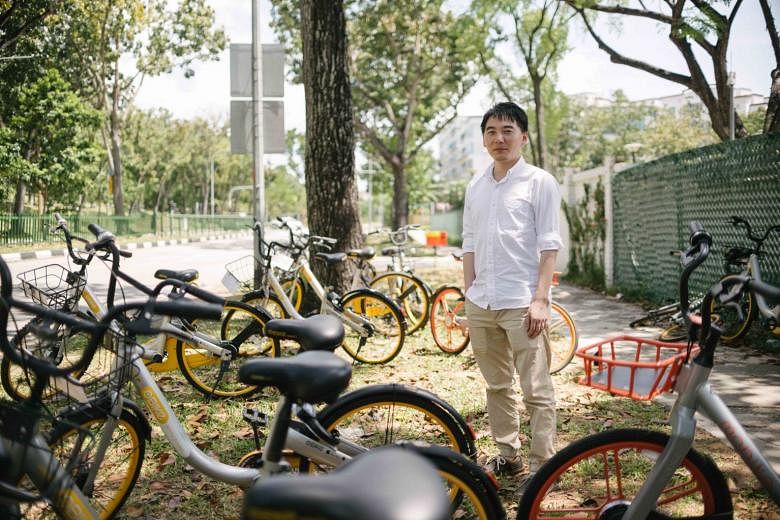SINGAPORE - Dockless shared bicycles have become a common sight around Singapore but, according to a study, each one is used for only half an hour a day on average.
Scientists from the Singapore-MIT Alliance for Research and Technology (Smart) analysed the GPS data of about 10,000 shared bikes from one of the largest companies over nine days in April and May last year.
The bike-share operator was not named.
Smart's paper, published in the International Journal of Sustainable Transportation last month, comes as the Government announced this week that bike-share operators will be licensed and their fleet sizes will be controlled, to tackle the growing problem of indiscriminate parking.
The Smart research paper supported regulating the shared-bike population, noting that public space is limited, and cannot support the continued expansion of bike-share firms, which appear to be competing for market share.
There are currently an estimated 100,000 shared bicycles here supplied by six operators, which have progressively entered the market since early last year.
Dr Zhang Xiaohu, a postdoctoral associate with Smart's Future Urban Mobility Interdisciplinary Research Group and one of the paper's researchers, said the "oversupply of bikes may hurt the operators' economic sustainability and cause urban and visual pollution".
The study found that each shared bike was used, on average, to make between 0.62 and 1.64 trips a day.
Asked whether their low usage meant there was an oversupply in Singapore, Dr Zhang said this was hard to say, as the concept of dockless bike-sharing is still in its early days.
Dr Zhang said the current distribution of bicycles is also "not optimal".
The paper also found that shared bicycles were used more in the evenings and operators would do well to redistribute the bicycles when and where they are most in demand.
Transport expert Tham Chen Munn likewise felt that the current usage rate of shared bicycles was low but this may change with better infrastructure.
The long idle time is likely because the bicycles are only used for first and last-mile trips, and for 10 and 15 minutes each time, he added.
"As more towns have better cycling infrastructure, there is a possibility that people will ride for longer distances. The 150km Round Island Route will also be an impetus for more usage," said Mr Tham, who works with traffic solutions company PTV Group.
There are currently nine Housing Board towns with cycling path networks and the Government plans to have similar infrastructure for six more towns over the next five years.
The eventual goal is to construct cycle paths in all 26 HDB towns by 2030, contributing to an islandwide network of 700km.


